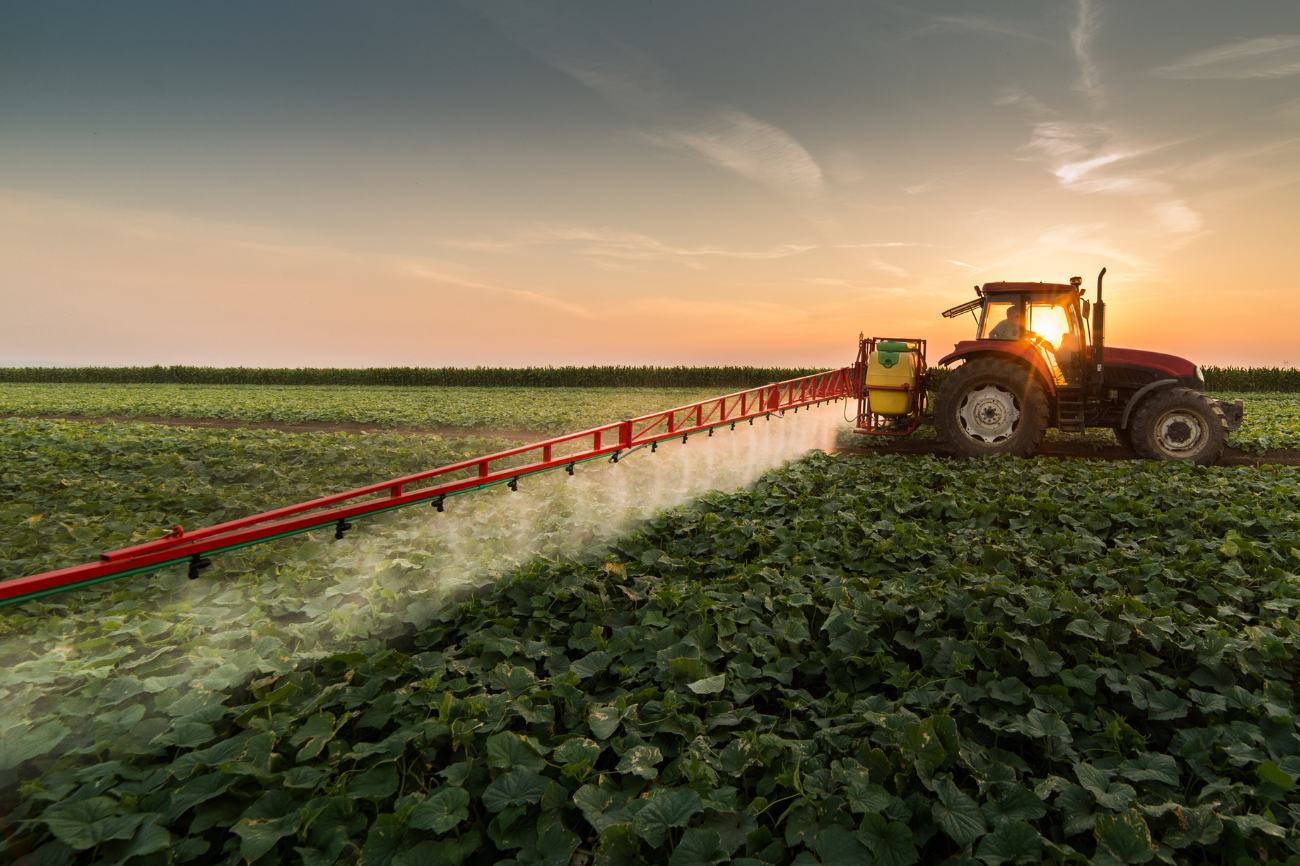Supplement Facts: When food is not enough (part 2)

Supplement Facts: An exclusive HANAH series meant to lift the lid off the supplement industry. An industry known for misinformation, false claims and deception. With over 85,000 supplements on the market today, our intent is to provide you with the information you need to ensure you are fully equipped to:
- Differentiate between low-grade and premium supplements
- Understand the current supplement market and how we got to now
- Identify red flags on labels and in descriptions
- Avoid potentially harmful ingredients
- Choose companies whose pure products you can trust
- Integrate supplements into a healthy lifestyle
- Further enhance such a way of life with other beneficial practices
In part 1, we examined the ways in which the industrial and agricultural revolutions played a part in the decline of food quality through the introduction of mechanization and the use of chemicals, which in turn, can contaminate the food we eat through irrigation. In part two of “When Food Is Not Enough,” we examine the rise of pesticides in agriculture and conclude by making our case for supplements.
The pesticide predicament
Soon enough, farms weren’t just receiving tainted water: they were creating it. This was in large part due to pesticides, a class of chemical that changed the face of farming forever. The practice of preventing insects, animals, and weeds from damaging or destroying crops is hardly new. In fact, farmers started using sulfur compounds as early as 2,500 BC to kill off insects, and who can blame them? We know from sources like the Old Testament how devastating a plague of locusts could be (let alone the accompanying afflictions of frogs and the Euphrates River turning to blood). Farmers in ancient times also started varying their growing seasons to try to outwit those pesky pests. Other primitive methods from before the time of Christ included natural anti-fungal concoctions, fire, and arsenic (irony noted).
If we then fast forward to the mid-1700s, we see that clever botanists identified derris, a legume from Southeast Asia and the Pacific Islands, and pyrethrin, an extract from chrysanthemums, as natural insecticides.[ix] A hundred years later, French wine producers figured out that a particularly obnoxious kind of American insect that had hitched a ride across the Atlantic –phylloxera – was decimating vineyards. After much experimentation, those resourceful French winemakers figured out how to solve the problem – grow a pest-resistant hybrid plant by grafting French vines onto American roots.[x]

Such ingenuity kept agriculture progressing for millennia. But it wasn’t long after the French viticulturists got creative that such nature-based solutions gave way to advances from laboratories. While some started experimenting with homemade chemical concoctions to try and tame pests in the late 1800s, it wasn’t until 1921 that farmers in Ohio started making use of a sprayer patented 40 years earlier to spray their fields with pesticides. Other states soon followed suit, and in the 1940s, the discovery and subsequent synthesis of DDT and benzene hexachloride led to the creation of the first widely-utilized pesticides.
These chemical concoctions were soon joined on farm supply stores shelves by Atrazine, which takes care of broadleaf weeds among crops like maize, and in 1974, glycophosphate, which can be used for the same purpose and also to eradicate invasive grasses. The effectiveness of such chemical treatments led to farmers nationwide tripling their use of pesticides between 1960 and 1981, according to a paper published by the US Department of Agriculture.[xi]

The use of pesticides and herbicides continues to grow with users putting their detrimental effects on the back burner. The introduction of insecticides in the 1970s to the 1980s contributed greatly to pest control and agricultural output, but at a cost. Now, with an adopted mindset that more is better, these chemicals are harming more than just the nutrients in crops. A four-year study of agricultural practices found that, “Fourteen of the top 20 pesticides linked to reported illnesses are classified as particularly hazardous,” with many having carcinogenic effects and acting as nerve toxins and endocrine disruptors [xiii]. From increasing the risk of heart attack and/or stroke by 46 percent to interfering with childhood development, pesticides are everywhere and it's time to know the truth of where they are and how they are getting there [xiiii].
The case for supplementation
The point here is two-fold. First, the same modern farming problems that are impacting crops and livestock are also applicable to the ingredients found in natural supplements. So if you’re sourcing the pills you pop, powders you mix into tea, or whey you’re blending in your smoothies from the US, they might be tainted with fertilizer, pesticides, or both, unless you’re being diligent and have found companies who eschew these harmful practices. Not to mention the possibilities of contamination from polluted groundwater.

Second, the rise of industrialized farming and decline of traditional growing methods like the use of fallow and grazing fields and crop rotation has led to a decrease in biodiversity. Monoculture farming – i.e. only growing one crop – has greatly reduced biodiversity, which in turn has led to soil that was once rich in minerals being stripped of its micronutrients. There are also less publicized issues like soil compaction caused by the overuse of heavy machinery, with a paper by Ohio State University and University of Ponta Grossa researchers stating that, “In the last hundred years, tillage has decreased soil organic levels by 60%,” leading to a dramatic reduction in the carbon that microbes feed on for energy and reduction in other organic materials that feed crops naturally.[x]
In layman’s terms, today’s soil is often unhealthier than ever, meaning that the carrots, potatoes, and other produce in your shopping cart is likely a pale imitation of what your grandparents were eating. Another challenge on this front is that food brought in from different states and countries often takes weeks to reach supermarket shelves, by which time it may have greatly diminished in quality.

Critics of supplementation claim that you can get everything your body needs to thrive by eating a well-balanced diet. But due to the drastic changes in farming methods we’ve just explored, this is no longer the case and you may well need to supplement to make up for deficiencies in certain areas. In some cases, the notion of filling nutrient gaps might well be nothing more than advertising hype. But with reduced soil quality, chemical and heavy metal contamination, and the other unintended consequences of mechanized farming being brought to bare on the food we put into our bodies, there are other instances where supplementing is desirable and even necessary.
Stay tuned
“When food is not enough” is the first topic in our ongoing blog series, Supplement Facts. In the coming weeks, we’ll dive deeper into the supplement industry to provide you with all of the necessary information to make informed decisions on your journey to long term health.
- Did you miss part one of Supplement Facts: When food is not enough? Catch up here.
- Learn more about HANAH's committment to purity, quality and results.
Sources
[ix] M. Frazier, “A Short History of Pest Management,” Pennsylvania State University, March 2010, available online at https://extension.psu.edu/a-short-history-of-pest-management.[x] Laura Clark, “American Bugs Almost Wiped Out France’s Wine Industry,” Smithsonian Magazine, March 19. 2015, available online at https://www.smithsonianmag.com/smart-news/american-bugs-almost-wiped-out-frances-wine-industry-180954619/#eD3BImVE6txtkid5.99.
[xi] “Pesticide Use in U.S. Agriculture: 21 Selected Crops, 1960-2008,” US Department of Agriculture, May 2014, available online at https://www.ers.usda.gov/webdocs/publications/43854/46734_eib124.pdf.
[xii] Jianghong Liu and Erin Shelar, “Pesticide Exposure and Child Neurodevelopment,” Workplace Health Safety, March 2012, available online at https://www.ncbi.nlm.nih.gov/pmc/articles/PMC4247335/.
[xiii] Margaret Reeves, Anna Katten, and Martha Guzmán, Fields of Poison 2002: California Farmworkers and Pesticides, Californians for Pesticide Reform, August 2002, available online at https://www.panna.org/sites/default/files/FieldsofPoison2002Eng.pdf.
[xiiii] Zara K. Berg et al, “Association Between Occupational Exposure to Pesticides and Cardiovascular Disease Incidence: The Kuakini Honolulu Heart Program,” Journal of the American Heart Association, September 25, 2019, available online at https://www.ahajournals.org/doi/10.1161/JAHA.119.012569.
[x] James J. Hoorman et al, “The Biology of Soil Compaction,” Crops and Soils, July-August 2011, available online at “https://www.nrcs.usda.gov/Internet/FSE_DOCUMENTS/nrcs144p2_045780.pdf.






Leave a comment
This site is protected by hCaptcha and the hCaptcha Privacy Policy and Terms of Service apply.